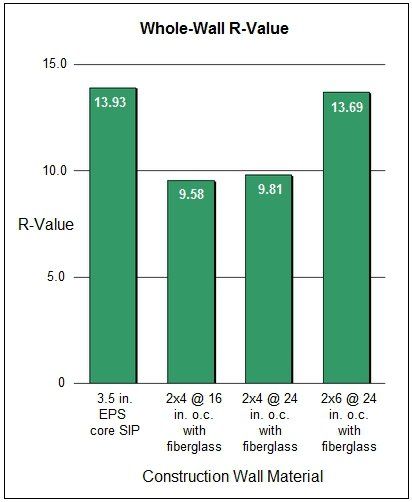SIPS in Vermont are Energy Efficient
Reduced Emissions with SIPs

The Environmental Protection Agency (EPA) estimates that the average U.S. home releases 22,000 lbs of carbon dioxide (CO2) into the atmosphere each year. This is twice the amount of the average vehicle.
By reducing the amount of energy used for heating and cooling,
Structural Insulated Panels (
SIPs ) can significantly reduce emissions produced by our homes and commercial buildings.
Why Build with SIPs?
One of the major concerns for any homeowner is the inability to control rising energy costs. Recently, there have been spikes in propane, heating oil, electricity, and even the labor associated with felling, splitting, and drying wood for home heating. However, SIPs offer a window of hope; SIPs are virtually airtight due to the nature of their fabrication and installation. As a result, the occupants have much more control over their interior environment.
Perhaps the greatest reason of all why
Structural Insulated Panels
(SIPs) are exploding into the marketplace is because of their superb energy efficiency and superior thermal performance. An analysis conducted by the Oak Ridge National Laboratory (ORNL) compared the average insulation value (whole-wall R-value) between a SIP wall and some other traditional construction wall sections. Their study determined that a 3.5 in. EPS core SIP outperformed its counterparts in thermal efficiency. There results are tabulated in the graph below.

Infromation Provided by Foam Laminates of Vermont via: http://www.foamlaminates.com
Find Us Here!
Tanguay Homes, Inc.
419 Route 105 Suite A,
Newport, Vermont 05855
Mailing Address:
P.O. Box 517
Newport, VT 05855
Follow Us!
Tanguay Homes of Newport, Vermont specializes in working with out-of-the-area clients. You may sign up to receive daily progress photos, e-mails, and calls. Weekend and late evening appointments are available for your convenience.
Tony Tanguay
President
Contact Us!
We will get back to you as soon as possible
Please try again later
